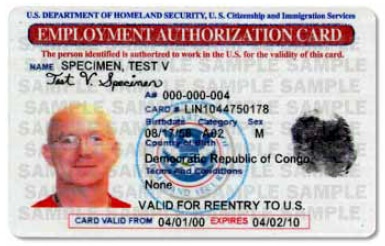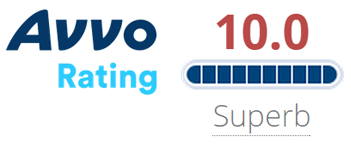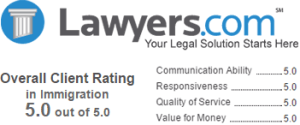 An Employment Authorization Document is also known as an EAD or a work permit. It may be obtained by filing form I-765 with the USCIS by a person who is in one of more than 40 different categories. These include applicants for adjustment of status, persons seeking temporary protected status, spouses of persons in E-1, E-2, L-1A, L-1B status, etc. Eligibility for an EAD is determined under Federal Regulations at 8 C.F.R. §274a.12.
An Employment Authorization Document is also known as an EAD or a work permit. It may be obtained by filing form I-765 with the USCIS by a person who is in one of more than 40 different categories. These include applicants for adjustment of status, persons seeking temporary protected status, spouses of persons in E-1, E-2, L-1A, L-1B status, etc. Eligibility for an EAD is determined under Federal Regulations at 8 C.F.R. §274a.12.
An EAD is a plastic card about the size of a credit card which contains personal information, the alien number of the holder and an expiration date. In some cases, the EAD may also contain an “advance parole” which permits the person to travel internationally and return to the U.S. EADs which read “Valid for Re-Entry to U.S.” also serve as advance paroles.
Certain foreign nationals with timely applications to extend their EADs will benefit from a permanent automatic extension of EAD validity of up to 540 days, under a regulation that was published on December 13, 2024. The regulation took effect on January 13, 2025 and applies to eligible applicants with timely filed renewal EAD applications pending or filed on or after May 4, 2022.
The list of EAD categories that qualify for the 540-day auto-extension includes the following categories:
* Adjustment of status (C09);
* Temporary Protected Status (TPS) (A12 or C19);
* Refugees and asylees (A3 and A5);
* Noncitizens who have properly filed applications for asylum and withholding of deportation or removal (C08);
* Approved self-petitioners under the Violence Against Women Act (VAWA) and their qualified children (A31);
* H-4 spouses with an unexpired H-4 I-94 (C26);
* E-1, E-2, and E-3 spouses with an unexpired E spousal I-94 (A17), noting however, that such individuals are not required to apply for an EAD, as they are employment-authorized incident to their valid E-1S, E-2S, or E-3S status; and
* L-2 spouses with an unexpired L-2 I-94 (A18), noting however, that such individuals are not required to apply for an EAD, as they are employment-authorized incident to their valid L-2S status.
Client Reviews

It Was Worth Every Penny
“Our experience with the Law Offices of Carl Shusterman began with a phone conference with Mr. Shusterman himself, which lasted about an hour. We were assigned to the team of Attorney Jennifer Rozdzielski and Ana Cruz. The situation was not an easy one, and it took about three years and a myriad of paperwork to resolve. We got to know both Jennifer and Ana very well in the process. They stayed positive and kept us on track with all the papers and forms and documentation required. I have to say that we were treated like family, and they were excited when we finally achieved our dreams. We are so glad we chose them – it was worth every penny!!”
- James Baker, Portland, Oregon
Read More Reviews
Zoom Consultations Available!
The following information is reprinted from a government publication entitled “Work With Us!” which was mailed to employers across the US when the EAD was first introduced:
The Immigration and Naturalization Service (INS) is phasing in a new Employment Authorization Document (EAD), the I-766. This document will be a card issued to aliens who are authorized to work temporarily in the United States. While the document is being phased in, some work- authorized aliens will continue to receive their work authorization on the existing EAD, the I-688B, and both cards will remain in circulation. The I-688B will continue to be issued and remain valid until the expiration date on the individual card. In addition, most aliens who are authorized to work only for a specific employer will continue to receive their authorization on Form I-94 (Arrival – Departure Record).
If you are an employer, aliens with temporary work authorization may, but are not required to, present this card to you during the employment verification process. The card will be a “List A” document for this purpose, which means that it establishes both identity and employment eligibility. The new card in no way alters your responsibilities to hire persons who are eligible to work in the United States, complete the I-9, and avoid discrimination in the hiring and verification process.
When you verify a new employee’s eligibility to work, you do not need to be a document expert. You have met your obligations if you examine the card and determine that it reasonably appears to be genuine and to relate to the person who presents it. The I-766 has several features, visible to the naked eye, to help you determine whether a card presented to you is genuine. The card also has certain security and quality control features intended for government use. Scroll down to read more about these features.
HOLOGRAMS
Holograms are pictures or words that may be seen when the card is turned or tilted in various directions. Most of the holograms are visible in ordinary light; however, your ability to see them will vary depending on the lighting conditions and angle at which you look at the card. In most normal lighting conditions, you should be able to see holograms of the Statue of Liberty, the letters “U.S.A.,” and the words “U.S. Immigration and Naturalization Service” repeated across the face of the card.
ADDITIONAL HOLOGRAMS
There are two additional holograms which you are not expected or required to look for, but which you may notice. You may see a map of the United States. You may also notice the letters “INS” which appear within the periods after each of the letters “U.S.A.” The visibility of those two features varies, and you should not be concerned or reject a card presented to you by an employee if you do not see them.
NUMBER AND BAR CODE
On the back of the card, the number and bar code at the top are etched into the surface and will feel rough to the touch.
MICROPRINTING
The light blue printing around the INS Seal and the dark printing around the words “Employment Authorization Card” are microprinting . In other words, though they may appear as solid lines from a distance, they are actually words in extremely small print. You do not need to attempt to actually read the words.
INFORMATION ABOUT THE AUTHORIZED ALIEN
The front of the card contains information about the authorized alien, such as name, birth date, and INS “A number.” The work authorization expiration date appears in a box at the bottom of the card. Restrictions on employment, if any, are noted under “Terms and Conditions.” If there are no restrictions, the word “none” will appear in this space. In certain circumstances, the card may not bear a fingerprint. When it does not, the words “fingerprint not available” will appear on the right side of the face of the card.
3-D ILLUSTRATION
The three dimensional depiction of the card highlights each of the layers and is intended only to assist you in “seeing” its features.
EDGE OF EAD CARD
The edge of the card appears to have a thin red stripe between two white lines, as if the card were a sandwich with red filler in the middle.
EADs – Additional Resources
- Employment Authorization – Categories of People Eligible for EADs (USCIS)
- EAD Automatic Extension Calculator (USCIS)
- Automatic EAD Extensions for 540 Days
- USCIS Streamlines Process for Refugee EADs (3-12-24)
- New USCIS Form Streamlines Process to Obtain an EAD and Social Security Number Simultaneously (10-02-17)
- Automatic Employment Authorization Document (EAD) Extension (USCIS)








